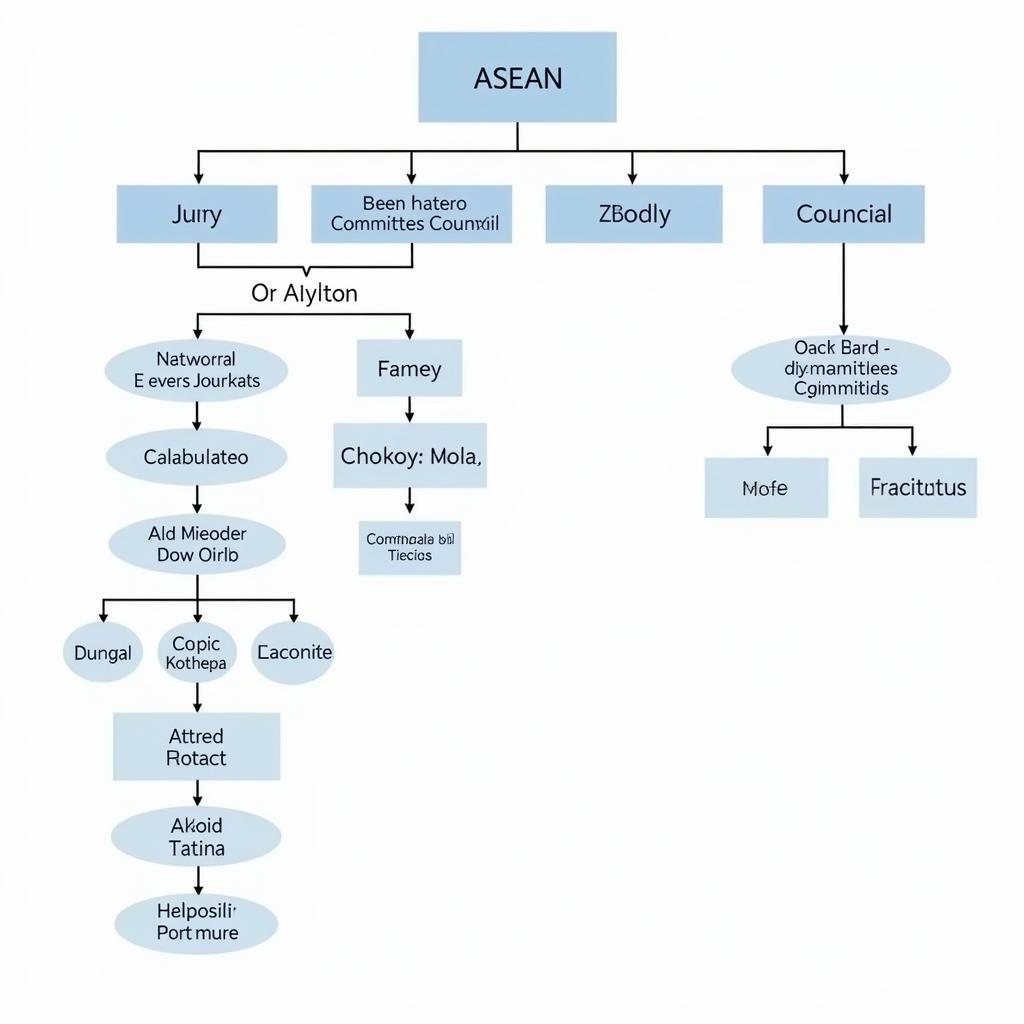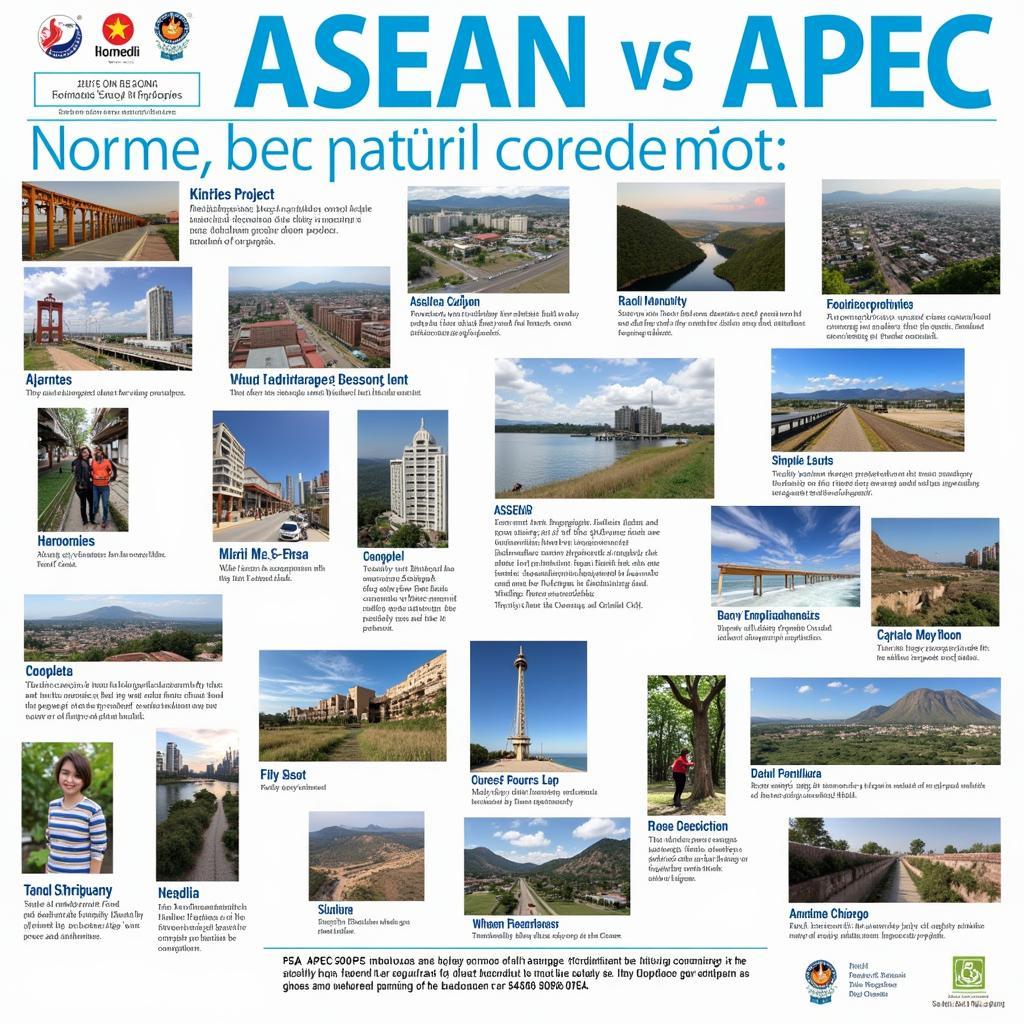Asean Apec Differences are often a source of confusion. These two major organizations play significant roles in the Asia-Pacific region, but their focuses, memberships, and operational structures differ considerably. This article aims to clarify the key distinctions between ASEAN and APEC, providing a comprehensive understanding of their unique contributions to regional cooperation and development.
Key Differences Between ASEAN and APEC
While both ASEAN and APEC contribute to regional stability and prosperity, they do so through different mechanisms and with distinct objectives. ASEAN, the Association of Southeast Asian Nations, primarily focuses on political, economic, and socio-cultural cooperation among its ten member states in Southeast Asia. APEC, the Asia-Pacific Economic Cooperation, on the other hand, is a broader forum encompassing 21 economies across the Asia-Pacific rim, with a primary focus on economic growth and trade liberalization.
Focus and Objectives
ASEAN prioritizes regional integration, aiming to create a single market and production base, promote peace and security, and foster socio-cultural collaboration within Southeast Asia. APEC, with its broader membership, emphasizes facilitating economic growth, trade, and investment across the Asia-Pacific region. It works towards reducing trade barriers and fostering a business-friendly environment.
Membership Composition
ASEAN consists of ten Southeast Asian nations: Brunei, Cambodia, Indonesia, Laos, Malaysia, Myanmar, the Philippines, Singapore, Thailand, and Vietnam. APEC’s membership is more diverse, including economies from across the Asia-Pacific, such as the United States, China, Japan, Russia, Canada, and Australia, in addition to several ASEAN member states. This wider scope gives APEC a trans-Pacific reach.
 ASEAN and APEC Organizational Structure
ASEAN and APEC Organizational Structure
Decision-Making Processes
ASEAN operates on a consensus-based approach, requiring agreement from all member states for decisions to be made. This can sometimes slow down the process, but it ensures that all voices are heard and considered. APEC, in contrast, employs a non-binding consensus-building approach. This allows for greater flexibility and faster decision-making, but the implementation of agreements relies on the voluntary actions of individual member economies. Check out more on apec asean countries.
Legal Framework
ASEAN has a legally binding framework, with treaties and agreements signed by member states, creating obligations and commitments. APEC, focusing on facilitating cooperation rather than enforcing rules, operates with non-binding commitments. This allows for greater adaptability to changing economic landscapes but also limits the enforceability of its initiatives. For further comparison, explore apec and asean comparison.
What is the difference between ASEAN and APEC in terms of their approach to economic cooperation?
ASEAN aims to build a deeply integrated economic community within Southeast Asia, focusing on creating a single market and production base, while APEC promotes open trade and investment across the broader Asia-Pacific region.
What are the key geographical distinctions between ASEAN and APEC?
ASEAN covers Southeast Asia, while APEC encompasses the wider Asia-Pacific region, including countries in North and South America, East Asia, and Oceania. Find out more details by visiting asean and apec.
 ASEAN and APEC Cooperation Projects
ASEAN and APEC Cooperation Projects
Conclusion
Understanding the ASEAN APEC differences is crucial for navigating the complex landscape of regional cooperation in the Asia-Pacific. While both organizations share the overarching goal of promoting regional prosperity, they employ distinct approaches and mechanisms. ASEAN emphasizes regional integration within Southeast Asia through a legally binding framework, while APEC fosters broader economic cooperation across the Asia-Pacific through non-binding commitments. Recognizing these differences allows for a more nuanced appreciation of their individual contributions to the dynamic and evolving Asia-Pacific region. More on regional cooperation at apec asean mutual recognition arrangement mra on tourism professionals pdf.
FAQ
- Is ASEAN part of APEC? Several ASEAN members are also part of APEC.
- What are the main goals of ASEAN? ASEAN aims for regional integration, peace, and prosperity within Southeast Asia.
- What is APEC’s primary focus? APEC focuses on economic cooperation and trade liberalization in the Asia-Pacific.
- How many members does each organization have? ASEAN has 10 members; APEC has 21.
- Are APEC decisions legally binding? No, APEC decisions are non-binding.
- How does ASEAN contribute to regional security? ASEAN promotes dialogue and cooperation to address security challenges.
- How does APEC facilitate economic growth? APEC reduces trade barriers and fosters a business-friendly environment.
Need more information on ASEAN recognition? Visit asea recognition.
For support, contact us 24/7:
Phone: 0369020373
Email: aseanmediadirectory@gmail.com
Address: Ngoc Lien Village, Hiep Hoa, Bac Giang, Vietnam.